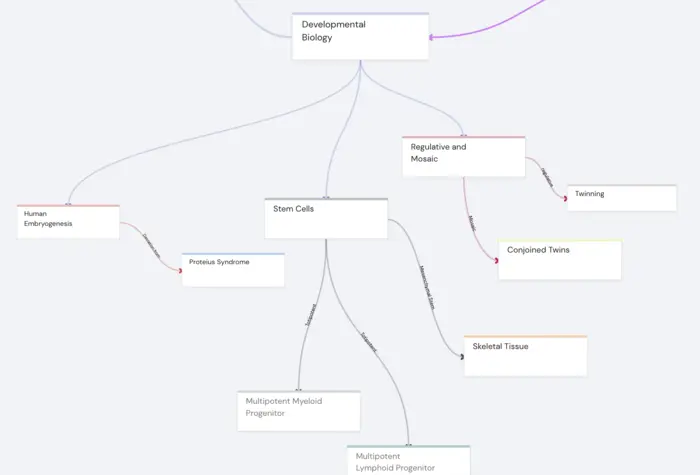Unlock the power of memory and supercharge your learning with Anki, a cutting-edge flashcard app that revolutionizes the way you study. Whether you're brushing up on medical terminology, diving into the intricacies of engineering, or decoding the complex characters of Mandarin Chinese, Anki is your ultimate guide to efficient and effective learning.
Anki is an open-source flashcard app that leverages the power of spaced repetition algorithms to help you combat the natural process of forgetting. It's like having a personal study coach who knows exactly what you need to revise and when. Anki ensures you study only what needs studying and encodes information into your long-term memory systematically rather than by chance.
Here's how it works. Anki allows you to create flashcards with questions or prompts. As you review your flashcards, you indicate your level of retention. Based on your performance, Anki adjusts the frequency of each flashcard. If you consistently get a card correct, Anki will increase the interval before showing it again. Conversely, if you're struggling with a card, Anki will show it to you more frequently until you've mastered it. This ensures your study sessions are efficient and targeted, focusing on the information you need the most help with.
However, it's essential to understand that Anki is not a magic pill for memory. It's a powerful tool that supplements your study process, covering just the final one-third of the memory’s core processes for information encoding—retrieval. But, if you use Anki with the right technique, you can guarantee anything you study will be remembered for a long time, build up a stack of prior knowledge, eliminate time-wasting restudy sessions, and turn downtime into productive study time.
In this comprehensive guide, we'll explore how to use Anki to its fullest potential, helping you learn more efficiently, retain information longer, and truly master the art of learning. It's time to take control of your memory, transform your learning experience, and start mastering Anki.
Understanding the Anki Memorization Technique
Dive into the depths of Anki and you'll discover an algorithm designed to transform you into a memory master. The secret sauce? A technique known as spaced repetition.
The Power of Spaced Repetition Technique
Unlike traditional flashcard systems that have you cramming information in one go, Anki follows a different approach – the Spaced Repetition Technique. This powerful technique is not just a cool feature, but is rooted in the science of learning and memory retention. It involves reviewing information at increasing intervals of time that optimizes memory retention and deters the natural process of forgetting.
Studies have demonstrated that learning and then reviewing materials in spaced intervals, which increase over time, aids in the retention of information and aids in transferring the data to your long-term memory. It's a technique that is 93% more effective compared to doing nothing and 74% more effective compared to massed practice (or cramming).
How Anki Uses Spaced Repetition for Optimal Memory Retention
Anki's algorithm, a digital variant of the SuperMemo 2 (SM-2) algorithm, takes this technique and supercharges it. Anki uses this algorithm to determine the optimal times for you to review information, based on your past performance.
During the learning stage, Anki acknowledges that it can take several encounters with a new card before you're able to memorize it. If you fail to recall a card, Anki doesn't punish you by showing you the failed card repeatedly. Instead, it uses your performance to adjust the card's ease.
The scheduling component of Anki's algorithm then calculates the next review interval based on your past performance. This includes factoring in any tardiness in answering cards. If you remember a card even though you answered it later than scheduled, the algorithm gives you a memory "boost". This way, Anki ensures that you are not just recalling information, but also retaining it effectively over the long haul.
By using Anki's spaced repetition algorithm, you're not merely memorizing information, you're mastering it. This method makes the challenging task of learning complex concepts or memorizing Chinese characters more manageable and efficient. It's like having a personal learning coach on hand, guiding you through your learning journey.
In the following sections, we'll take a close look at how to get started with Anki, make effective flashcards, and use advanced techniques for efficient studying. Stay tuned to discover how this fascinating tool can help you master your learning process and achieve your goals.
Getting Started with Anki: A Step-by-Step Guide
Ready to supercharge your learning with Anki? Whether you're diving into Mandarin Chinese or any other subject, setting up and using Anki effectively is a breeze. Follow these steps to get up and running with this powerful learning tool.
Downloading and Installing Anki
The first step on your Anki journey is to secure the program itself. Anki is available for Windows, Mac, and Linux on the official Anki website. For on-the-go studying, there's also AnkiDroid for Android devices and AnkiMobile for iOS. Simply download the version suitable for your device and follow the prompts to install it.
Creating Your First Deck
Once Anki is installed, it's time to create your first deck. A deck in Anki is like a box of flashcards, dedicated to a particular topic or area of study. To create a deck, click on the "Create Deck" button on the bottom of the Anki window. Name your deck something relevant to the information it will contain, like "Mandarin Vocabulary" or "Physics Formulas".
Making Effective Flashcards
Now that you've created a deck, it's time to fill it with flashcards. Each card in Anki has a front (the question or prompt) and a back (the answer or explanation). For example, if you're studying Mandarin, the front of your card might be a Chinese character, and the back could be its pronunciation and meaning.
To create a new card, select your deck and click "Add". Then, fill in the "Front" and "Back" fields with your question and answer. Keep your cards simple and focused on one piece of information for optimal memory recall.
Organizing Your Decks and Cards
As you add more flashcards and decks, keeping them organized becomes crucial. Anki allows you to tag your cards with relevant keywords, making it easier to filter your deck and focus on specific topics. You can also move cards between decks if you find they fit better elsewhere.
Anki's flexibility doesn't stop at organizing, though. You can customize your study sessions by adjusting the number of new cards you see each day, the intervals at which cards are shown, and more. This way, Anki adapts to your learning style and pace, ensuring you spend your time where it matters most.
Remember, the key to mastering Anki is consistency. Make sure to review your cards daily to take full advantage of Anki's spaced repetition algorithm. Happy studying!
Advanced Anki Techniques for Efficient Studying
Having understood the basics of Anki, let's take your learning efficiency to the next level. By mastering some advanced Anki techniques, you can make your study sessions more productive and enjoyable. Let's dive into these techniques that include using AnkiDroid or AnkiMobile for studying anywhere, utilizing the custom study feature, and importing shared decks to supplement your study material.
Using AnkiDroid or AnkiMobile for Studying Anywhere
The beauty of Anki lies in its flexibility. It's not just an application for your computer, but a tool that you can take with you wherever you go. Whether you're waiting in line, commuting, or just have a few spare minutes, you can turn that time into productive study time.
AnkiDroid (for Android users) and AnkiMobile (for iOS users) are mobile versions of Anki that allow you to review your flashcards anytime, anywhere. The interface is intuitive, and you can sync your progress with your computer version of Anki.
This means that no matter where you are, you can always have access to your study materials and continue reinforcing information into your long-term memory. It's as if you're carrying a personal tutor in your pocket!
Utilizing the Custom Study Feature
Among Anki's many features, the custom study feature is a game-changer. It provides you with an extra layer of control over your study sessions.
This feature allows you to create temporary study sessions with specific parameters that you choose. For instance, you could create a custom study session of cards you've been struggling with or cards tagged with a specific subject.
By tailoring your study sessions to your specific needs, you can focus your efforts on the areas that need the most attention, thereby enhancing your learning efficiency.
Importing Shared Decks and Supplementing Your Study Material
Anki's shared deck feature is another powerful tool to leverage. There's a vast repository of shared decks created by other Anki users that you can download and use. These decks range from language vocabularies, medical terminology, historical facts, and much more.
Importing shared decks can be a great way to supplement your study material. However, remember the importance of creating your own cards, as the process of crafting a card aids in memory encoding. Shared decks should not replace the process of creating your own cards but serve to enhance and diversify your study materials.
By combining these advanced techniques, you can truly harness the power of Anki and take your learning efficiency to new heights. But remember, as powerful as Anki is, it's not a magic pill. It's a tool that, when used properly, can significantly enhance your learning process.

How to Use Anki for Language Learning: A Case Study of Mandarin Chinese
If you've ever attempted to learn a language, you know that the task can feel like piecing together a complex puzzle. Each word, phrase, and character is a fragment that brings you closer to the full picture. Anki, with its scientifically-backed approach to learning, can be your secret weapon, particularly when it comes to mastering a complex language like Mandarin Chinese.
Using Anki for Mandarin Vocabulary and Character Memorization
The path to Mandarin Chinese fluency starts with a solid foundation in vocabulary and character recognition. Anki, with its customizable flashcards and powerful spaced repetition algorithm, can help you focus on the areas where you need the most practice.
When using Anki for Mandarin vocabulary and character memorization, start by creating your own cards. This time-consuming process is essential for memory encoding and retention. Tailor each card to your learning style; for instance, you might include the character, its pinyin pronunciation, the English translation, and perhaps an audio clip for pronunciation practice.
As you review the flashcards, Anki’s algorithm adjusts the frequency of card exposure based on your performance. Cards you consistently answer correctly will appear less frequently, while those you struggle with will show up more often. This ensures you're constantly working on memorizing the information you need the most help with, making your study sessions efficient and targeted.
Importing Mandarin Anki Decks into Traverse for Enhanced Learning
While Anki is a powerful standalone tool, it can be even more effective when used in conjunction with other learning resources. For instance, Traverse, a unique learning app that merges mind mapping, spaced repetition flashcards, and connected note-taking, can take your Mandarin learning to the next level.
Traverse allows you to import Anki decks, thereby enabling you to leverage the power of Anki's spaced repetition while enjoying Traverse's immersive learning environment. This combination lets you visualize how different aspects of your Mandarin study material connect, helping you fully grasp the language's structure and nuances.
For example, say you're focusing on Mandarin vocabulary related to food. You could import an Anki deck dedicated to this topic into Traverse, then use the app's mind mapping feature to draw connections between related words and concepts. This way, you're not just memorizing individual words, but also understanding how they fit within the broader context of Mandarin Chinese language and culture.
By mastering the use of Anki for Mandarin learning and integrating it with the powerful features offered by Traverse, you're well-equipped to conquer the challenge of learning Mandarin Chinese. Remember, language learning is not a race; it's about understanding and retaining knowledge. With a consistent and efficient study routine powered by tools like Anki and Traverse, you're bound to make significant strides on your Mandarin learning journey.
Avoiding Common Pitfalls When Using Anki
Understanding and utilizing Anki's capabilities effectively is key to achieving your learning goals. However, it's also crucial to be aware of common mistakes and pitfalls that can hinder your progress. Here are three common pitfalls to avoid when using Anki and how to successfully navigate them.
Understanding Anki as a Tool, Not a Magic Pill
The first pitfall is treating Anki as a magic pill that will automatically solve all your learning challenges. As potent as Anki is, it is important to remember that it's just a tool that supplements your study process and depends on your skills. Anki's strength lies in aiding the final one-third of the memory's core processes for information encoding, which is retrieval. If your encoding and storage process, the first two-thirds of the system, is flawed, then using Anki won't be the magic pill it's often believed to be. It's not about adding more tools, but about eliminating wastes and inefficiencies in your learning process.
The Importance of Regular Review and Avoiding Backlogs
Another pitfall to be wary of is skipping review sessions. Regular review is critical to the effectiveness of the spaced repetition technique used by Anki. Forgetting happens every single day, so skipping a day of review can lead to a significant backlog, meaning you'll have to review your overdue cards plus your due cards the next day. This could be an overwhelming task, hindering your progress and demotivating you. Therefore, it's important to maintain a consistent study routine, reviewing your cards every single day without fail.
Ensuring Comprehension Over Memorization
Lastly, it's crucial to avoid the pitfall of memorization over comprehension. While Anki is excellent for memorization, understanding the material is equally, if not more, important. Memorizing without understanding is akin to building a house on a weak foundation. It might hold for a while, but it won't stand the test of time. When creating your flashcards, make sure you understand the material first. If you encounter a card you struggle with, don't just memorize it; take the time to understand the concept before moving on.
By being aware of these common pitfalls and how to avoid them, you'll be well on your way to mastering Anki and achieving maximum learning efficiency. Remember, Anki is a powerful tool, but its effectiveness ultimately depends on how you use it. With a consistent study routine, a focus on understanding over memorization, and the right approach to using Anki, you can significantly enhance your learning process.
Conclusion: Maximizing Your Learning Efficiency with Anki
As we wrap up this comprehensive guide, it's important to reiterate that using Anki is like picking up a new instrument. It takes practice, patience, and a little bit of discipline. But once you're tuned in, it can play a significant role in accelerating your learning and retention. The key is to use it as a supplement to your studies, not a replacement.
Anki's power lies in its use of the spaced repetition technique, a scientifically proven method that makes learning more efficient by strategically timing your reviews. This way, you're always studying what you need to remember most. Combined with the ability to customize your flashcards and organize your decks, Anki becomes a potent tool in your learning arsenal.
For our Mandarin learning enthusiasts, Anki can be a game-changer. It can help you master vocabulary and characters, and with the flexibility to import Mandarin Anki decks into Traverse, you can even take your language learning to the next level.
However, remember that Anki isn't a magic pill. Its effectiveness is contingent on your learning approach. Regular reviews, avoiding backlogs, and prioritizing comprehension over memorization are essential for getting the most out of Anki.
In a nutshell, Anki is an excellent tool to enhance your learning efficiency, but it's not a standalone solution. It works best when used as part of a holistic learning strategy that includes other methods like reading, practical application, and active engagement with the material.
So take the wheel, start experimenting with Anki, and see how it can drive your learning endeavors to greater heights. Remember, the aim is to learn smarter, not harder. By fully harnessing the power of Anki, you can make your learning journey not only efficient but also enjoyable. And that, dear lifelong learner, is the true essence of mastering Anki!

